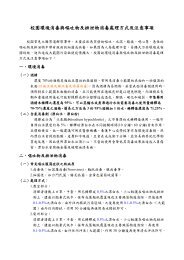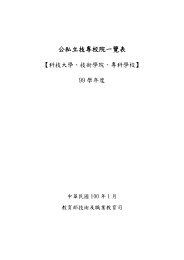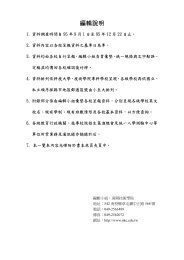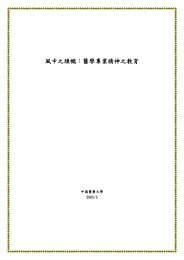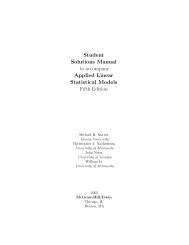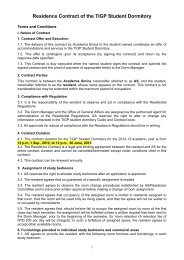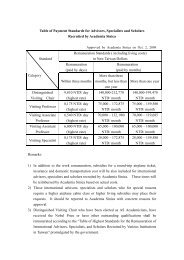Journal of Film Preservation - FIAF
Journal of Film Preservation - FIAF
Journal of Film Preservation - FIAF
Create successful ePaper yourself
Turn your PDF publications into a flip-book with our unique Google optimized e-Paper software.
Cette interview a été conduite dans<br />
le cadre du projet « Histoire orale<br />
de la <strong>FIAF</strong> » au domicile d’Eileen<br />
Bowser, à New York, le 27 juillet<br />
2009. Le présent texte a été revu et<br />
corrigé pour sa publication dans le<br />
JFP. Les modifications apportées à<br />
la transcription de l’interview ont<br />
été effectuées avec l’aide, voire la<br />
complicité amicale de l’interviewée.<br />
Singulier parcours que celui d’Eileen<br />
Bowser : née à Columbia Station, Ohio,<br />
d’une famille nombreuse, dans une<br />
région agricole, elle garde un souvenir<br />
très lointain mais ému de son enfance,<br />
de ses dimanches au cinéma avec les<br />
membres de sa famille, à l’époque de<br />
la Grande Dépression. C’est à Columbia<br />
Station qu’elle suit sa scolarité et qu’elle<br />
rencontre son futur mari, Bill Bowser,<br />
avec qui plus tard elle s’installera à<br />
New York, dans le quartier du West<br />
Village. À l’Université de Chapel Hill,<br />
elle consacrera son travail de diplôme<br />
au Tintoret, et orientera sa sensibilité<br />
vers le monde de l’image. Riche de<br />
cette première expérience, elle pourra<br />
poser sa candidature dans plusieurs<br />
musées de New York et, en 1953,<br />
réussira à décrocher ses premiers jobs<br />
au célèbre MoMA, pour entrer dans le<br />
Département <strong>Film</strong> en 1955, devenir<br />
conservateur film adjoint en 1967, et<br />
conservateur titulaire en 1976. Elle<br />
prendra sa retraite en 1993.<br />
Pendant les 50 années passées au<br />
MoMA, Eileen Bowser fut témoin<br />
et protagoniste privilégiée du<br />
développement du Musée et du<br />
Département <strong>Film</strong>. Elle y devint la<br />
grande spécialiste du cinéma des<br />
premiers temps aux États-Unis et y<br />
déploya son talent de conservateur à<br />
une époque où le cinéma acquit ses<br />
titres de noblesse grâce à la politique<br />
de sélection dynamique des dirigeants<br />
de l’institution, souvent inspirés par la<br />
sagesse d’Eileen Bowser. Sa trajectoire<br />
nationale connut son point culminant<br />
avec la publication de son livre The<br />
Transformation <strong>of</strong> Cinema, Vol. II de la<br />
série History <strong>of</strong> American Cinema, 1990.<br />
Forte de la formidable expérience<br />
acquise au Département <strong>Film</strong>, Eileen<br />
réunissait les meilleures conditions<br />
pour représenter le MoMA dans les<br />
rencontres internationales au moment<br />
où les échanges entre cinémathèques<br />
<strong>of</strong>fraient les meilleures perspectives<br />
de constitution des fonds d’œuvres du<br />
7 ème Art. Sur le plan international, ses<br />
the Commission was a librarian except me, so it’s no wonder I took a back<br />
seat in the projects. I was the one that sold them to <strong>FIAF</strong>, so to say.<br />
Right after the war, judging from the minutes, the <strong>of</strong>ficial language<br />
was more French than English. I think that even Jerzy Toeplitz, 22<br />
though he was speaking English, exchanged <strong>of</strong>ficial correspondence<br />
in French. And, <strong>of</strong> course, Langlois.<br />
They resumed in French again when Raymond Borde 23 became Secretary<br />
General. Raymond and I had a funny kind <strong>of</strong> relationship because he<br />
wouldn’t speak a word <strong>of</strong> English. And I had very little French when I<br />
started in <strong>FIAF</strong>. I improved some over the years but never became fluent<br />
in speaking French. After sitting there with Raymond during the Executive<br />
Committee meetings and listening to translations <strong>of</strong> what he would say, I<br />
began to come to understand his French at least, if not all the other French<br />
speakers. Raymond was passionate about <strong>FIAF</strong>, cinema, and film archives<br />
and film history, a wonderful man.<br />
Raymond’s French was very pleasant. He spoke very distinctively. He<br />
had always good anecdotes to tell, related to film history and not<br />
only to preservation work.<br />
Another with language problems was Victor Privato from Gosfilm<strong>of</strong>ond.<br />
He always traveled with translators. He was a grandfatherly sort <strong>of</strong> man at<br />
the time I knew him, and gave very thoughtful, considered opinions in the<br />
discussions. We spent some breakfasts together without a translator, smiling<br />
at each other, maybe saying “good morning” and “thank you” in each other’s<br />
language. <strong>FIAF</strong> was one <strong>of</strong> those rare international organizations that was<br />
truly international across all political boundaries, and at the same time it<br />
was an organization that was working, that was achieving things, not just<br />
a figurehead. At that time it was rare among international organizations I<br />
knew anything about. During the Cold War, I was traveling to countries on<br />
the other side <strong>of</strong> the Iron Curtain, as we called it then, and had good friends<br />
in the archives everywhere. In a way, that fulfilled some <strong>of</strong> my youthful<br />
dreams about the world.<br />
I think also that <strong>FIAF</strong> has been adapting to different situations,<br />
because it started like a socially high cultural event right before<br />
World War II, in New York, with the first Congress, 24 then it went on<br />
as a very exclusive club after World War II, and in further stages it has<br />
been adapting to different international situations.<br />
I was thinking about all those years that we spent so much time talking about<br />
membership: defining membership, deciding what were the qualifications<br />
for membership, principles and policies. And I realized that what we were<br />
really doing was defining ourselves: who we were and what we were trying<br />
to do. That’s why over and over again we have to keep discussing the same<br />
issues. We were changing. You can see the point, for example, in the 1980s<br />
when we really began to expand. And as the old guard died <strong>of</strong>f or retired,<br />
more and more people wanted the expanded <strong>FIAF</strong>, the more inclusive <strong>FIAF</strong>,<br />
22 Jerzy Toeplitz (1909-1995), founder <strong>of</strong> the Łódž <strong>Film</strong> School. <strong>FIAF</strong> President from 1948<br />
to 1971.<br />
23 Raymond Borde (1920-2004), founder <strong>of</strong> the Cinémathèque de Toulouse. Member <strong>of</strong><br />
the <strong>FIAF</strong> EC from 1966 to 1991.<br />
24 The first <strong>FIAF</strong> Congress met for several days in New York, starting on Tuesday 26 July<br />
1939.<br />
33 <strong>Journal</strong> <strong>of</strong> <strong>Film</strong> <strong>Preservation</strong> / 81 / 2009





